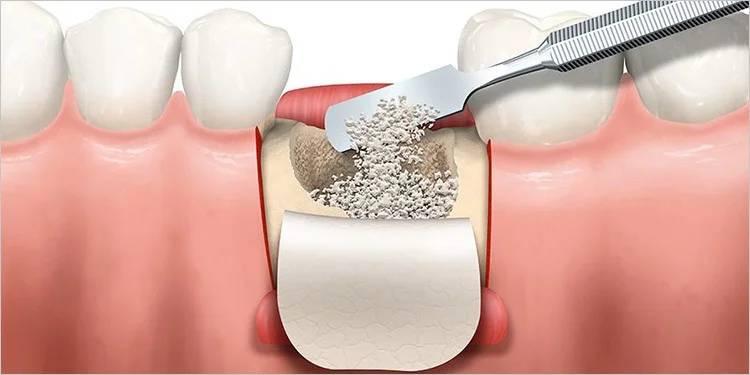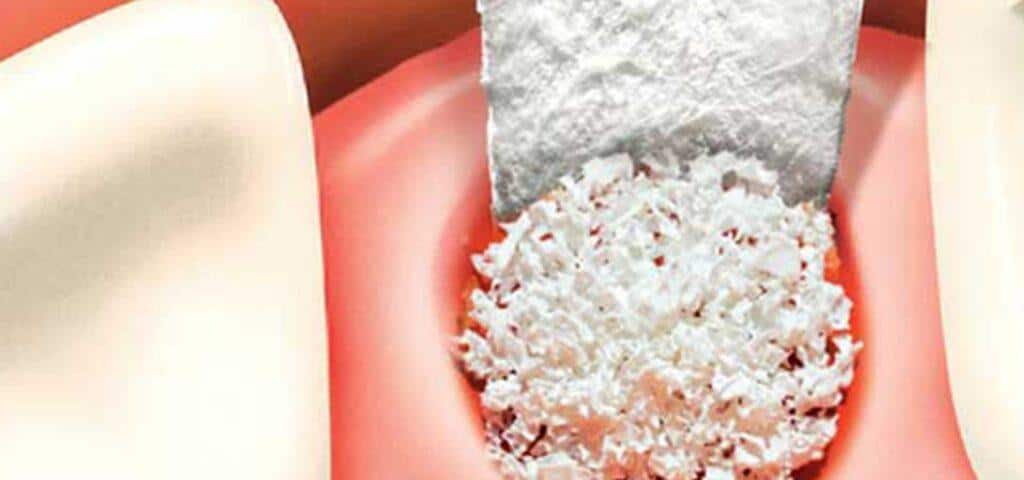Bone Graft
Kent Dentist Office

A dental bone graft is necessary whenever there is bone loss in the jaw. When neighboring teeth are experiencing bone loss or before dental implants are placed, this procedure is routinely performed.
What is a dental bone graft?
A dental bone graft can restore your jaw’s volume and density in places where there has been bone loss. Both human and animal tissue banks (autogenous and allograft) may be used to obtain the bone graft material (xenograft). Sometimes artificial materials are used for bone grafts (alloplast).
How does a dental bone graft work?
The bone transplant makes room for your body to carry out the required repair work after it is in place. In other words, a dental bone graft serves as a scaffold for your own bone tissue to develop and regenerate.
Periodically, our dentists may combine a dental bone graft with platelet-rich plasma (PRP). This is made from a sample of your own blood and aids in tissue regeneration and healing.
Who needs a dental bone graft?
Someone who has decreased jawbone density commonly needs a dental bone graft. If the following applies to you:
- Are having a tooth out.
- Plan to replace a missing tooth with a dental implant.
- The jaw needs to be repaired before dentures are worn.
- Possess bone loss in patches as a result of gum disease (periodontitis).
How common are dental bone grafts?
Bone grafts for the teeth are a relatively common procedure by our dentists in Kent. These procedures might be carried out by our general dentist or a specialist like an oral surgeon or a periodontist.

Are there different types of bone grafts?
Yes. There are four main types, including:
- Socket preservation.This type of graft, often referred to as ridge preservation, is implanted into the tooth socket as soon as it has been pulled. It plugs the gap left by the missing tooth and stops the sidewalls of the socket from collapsing.
- Ridge augmentation. The supporting jawbone may be thinner than it was previously if your teeth have been gone for some time. Ridge augmentation broadens and volumizes the jawbone, making it more secure as a base for implants or other restorative procedures.
- Sinus lift.Located immediately above your top back teeth are the maxillary sinuses. The sinuses may descend and encroach on the region originally occupied by the roots of the lost upper back teeth. Implants would be inappropriate in this situation since they would pierce the sinus membrane. The sinus is raised to its correct location using this method. The sinus is subsequently filled with a dental bone graft, laying the groundwork for future dental implants.
- Periodontal bone graft.The bone that supports the teeth might deteriorate as a result of gum disease infection. The teeth may become loose as a result of this. An existing tooth is given greater support and less movement by a periodontal bone graft.
- Bone grafts for dental implants typically need to cure fully before the real implant is inserted. Recovery periods vary because every person is different. In exceptional circumstances, your dentist might be able to insert a dental implant and a bone graft simultaneously. But each instance must be considered individually.
What happens before dental bone graft placement?
An oral examination will be done by our dentist in Kent to look at the condition of your teeth, gums, and jaw. The degree of your bone loss will be determined by dental X-rays or scans. Your dentist will then go over your treatment options with you and design a personalized treatment strategy to suit your requirements.
What happens during dental bone graft surgery?
The dentist will first use local anesthetic to numb the region. They will next make a little incision in your gums. The jawbone can be seen by pushing back the gum tissue a little. Your dentist will add bone grafting material to the area after cleaning and sanitizing it to fix the deformity. A membrane is frequently placed over the bone transplant to provide further protection. The gum tissue is finally realigned, and the incision is stitched up.
What happens after a dental bone graft?
You can have discomfort, swelling, and bruising following a dental bone graft. These are common side effects, and they should go away soon. Painkillers can be used to treat symptoms. You might also receive antibiotics from your dentist. These must be consumed exactly as directed.
Over the course of the first several days, you might detect tiny pieces of bone erupting from the wound. These fragments frequently resemble sand or salt granules. Call your dentist to make sure that you are healing as expected, even though this is typically not cause for alarm.
How painful is a dental bone graft?
Dental bone graft patients typically experience minimal to no pain. Just be sure to take all prescription medications as directed and closely adhere to your post-operative instructions.
Are you put to sleep for a dental bone graft?
Most of the time, local anesthetic can be used to easily place a bone graft without the need for general anesthesia. Nitrous oxide, oral sedation, and IV sedation are just a few of the sedative options available from dental professionals for your comfort. General anesthesia might be advised if your situation is more complicated. Which choice is best for you? Ask your dentist.
Can dental bone grafts fail?
The success rates of dental bone grafts are astoundingly high. Failure is a possibility with any surgery, especially for those who smoke or have specific medical conditions. Dental bone transplant failure can be detected by:
- After the initial week, pain or swelling that gets worse.
- From the bone transplant site, there may be pus or discharge.
- Gum recession (when the gums pull away from the teeth).
- There is no increase in jawbone volume.
Advantage
Your eligibility for dental implants and other restorative procedures may be improved by dental bone grafts. With this process, you can get your jaw back to how it was before any injuries, tooth loss, or periodontal disease.

